Note: To celebrate the 20th anniversary of the Hubble Space Telescope, for ten days, Universe Today will feature highlights from two year slices of the life of the Hubble, focusing on its achievements as an astronomical observatory. Today’s article looks at the period April 1992 to April 1994.
“And we have liftoff, liftoff of the Space Shuttle Endeavor, on an ambitious mission to service the Hubble Space Telescope”
Without a doubt, Servicing Mission 1 in early December 1993 was the high point of the Hubble Space Telescope’s third and fourth years in space.
For starters, it successfully replaced the high speed photometer instrument with COSTAR (Corrective Optics Space Telescope Axial Replacement), which, as its name implies, corrected for the mis-figured primary mirror and so permitted the three instruments not replaced to make the high quality images intended (they were the Faint Object Camera, the Faint Object Spectrograph, and the Goddard High Resolution Spectrograph).
It also replaced the WF/PC (Wide Field Planetary Camera) with an upgraded WF/PC (called WFPC2), and made several other repairs and replacements which considerably improved the Hubble’s performance and robustness.
[/caption]
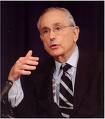
Well before the Hubble was launched much of its observing time was pre-allocated, especially to two Hubble Key Projects, “on the Extragalactic Distance Scale”, and the “Quasar Absorption Line” Key Project. The former is well-known (and I’ll cover it in a later Hubble 20th birthday article); the latter hardly known at all outside the astrophysics community. It was the brainchild of the remarkable John Bahcall, and much of the Hubble’s time in its first four years was devoted to it. There are 13 main papers on its results, with hundreds more based on them. In a word, this project revolutionized our understanding of the space between galaxies and galaxy clusters, all the way from just beyond the Milky Way to billions of light-years distant.
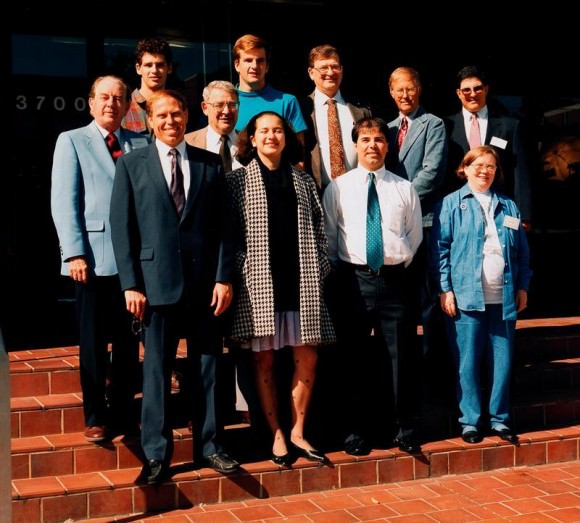
It wasn’t only professional astronomers who used the Hubble in these two years; 16 amateurs did too! Do you know what they found? If you had the chance, what would you use the Hubble to observe?
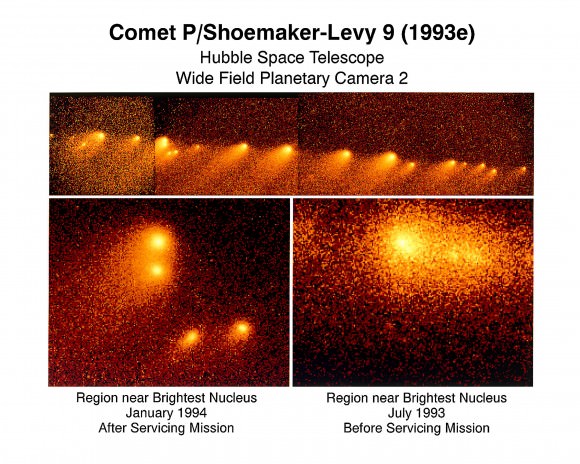
Perhaps the most captivating images the Hubble took in these two years are the ones of Comet Shoemaker-Levy 9 on its way to a collision with Jupiter (I’ll cover the collision itself tomorrow). Do you remember, back then, that asteroid and comet threats to life on Earth just became a whole lot more believable?
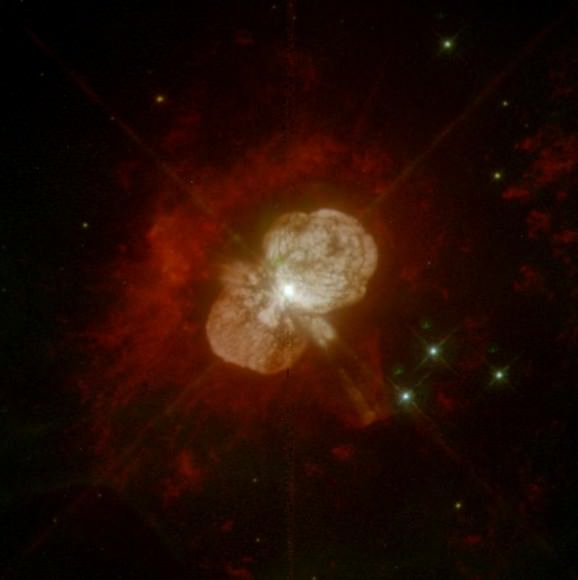
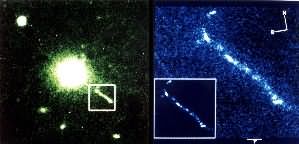
Hubble sent back images of many more objects in these two years, including a much better one of eta Carinae (compare this one with the one in yesterday’s article) and the optical jet of the iconic quasar 3C273.
Tomorrow: 1994 and 1995.
Previous article:
Hubble: It Was Twenty Years Ago Today
Sources: HubbleSite, European Homepage for the NASA/ESA Hubble Space Telescope, The SAO/NASA Astrophysics Data System

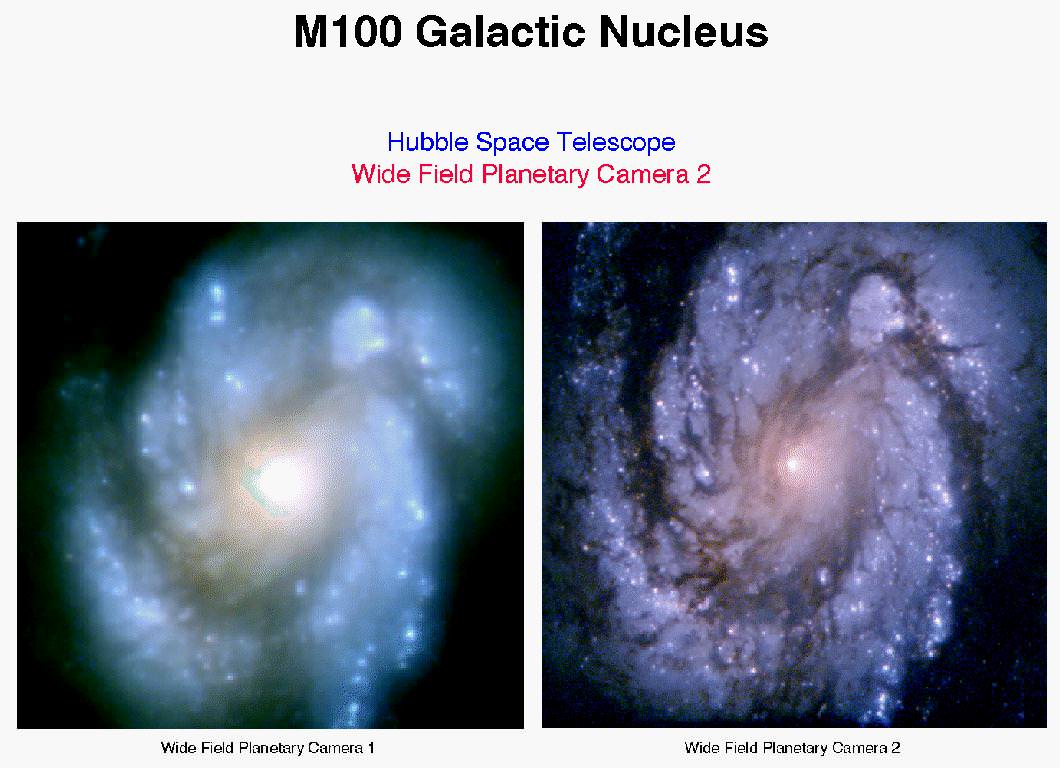
You gotta admit, that’s awesome. Hubble has been a wonderful scope, and the information and knowledge we have gained from it has been worth every penny.
It’s also a great P-R tool, one that sparks interest in astronomy. It has helped make science more accesible to the public, and sometimes that alone is worth the investment.
My jaw still hurts from hitting the floor when they intially published the Eta Car picture. It is amazing the effect that these pictures have had on the public and the outcry that ensued from the proposed cancelling of the last servicing mission.